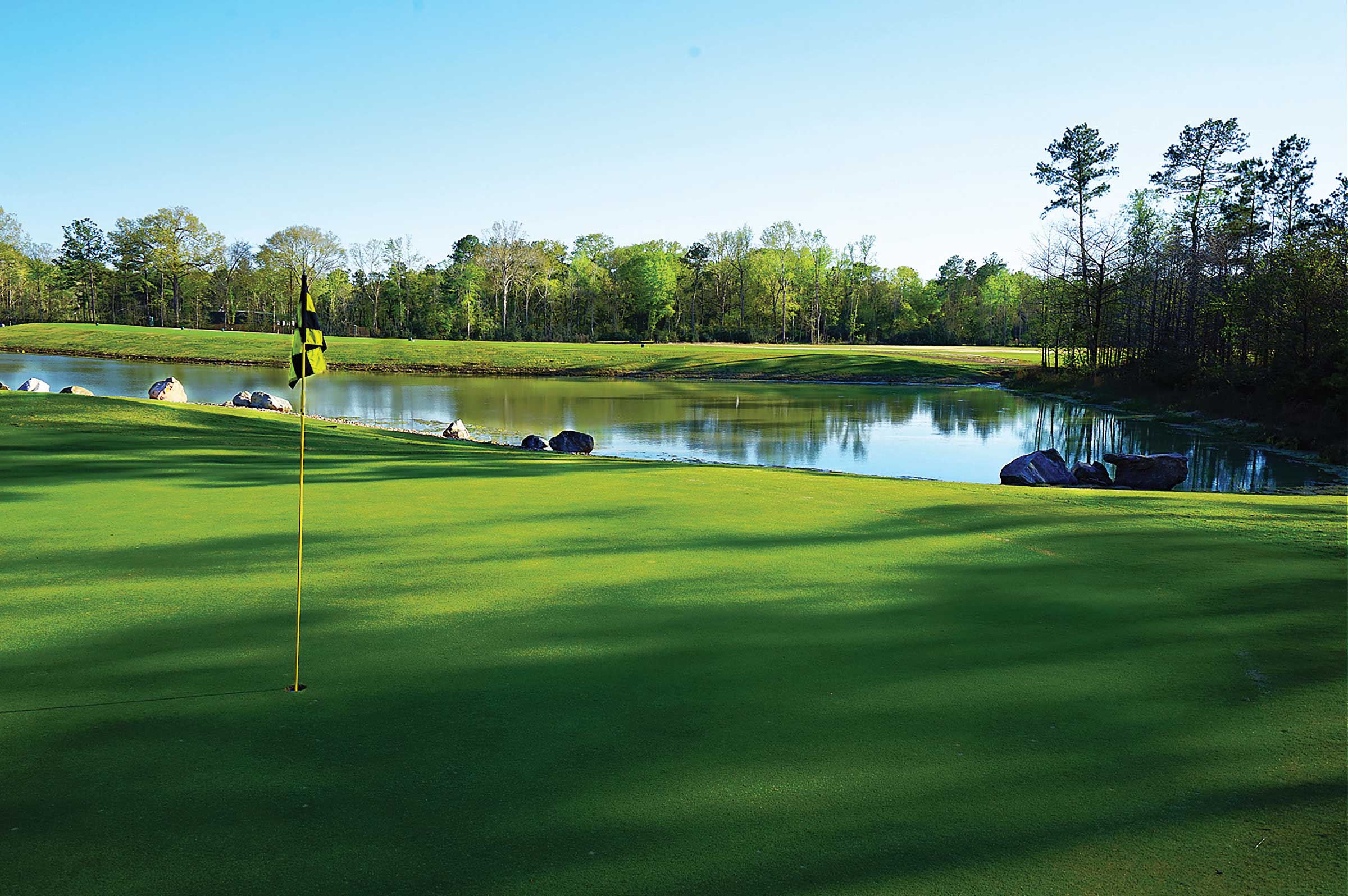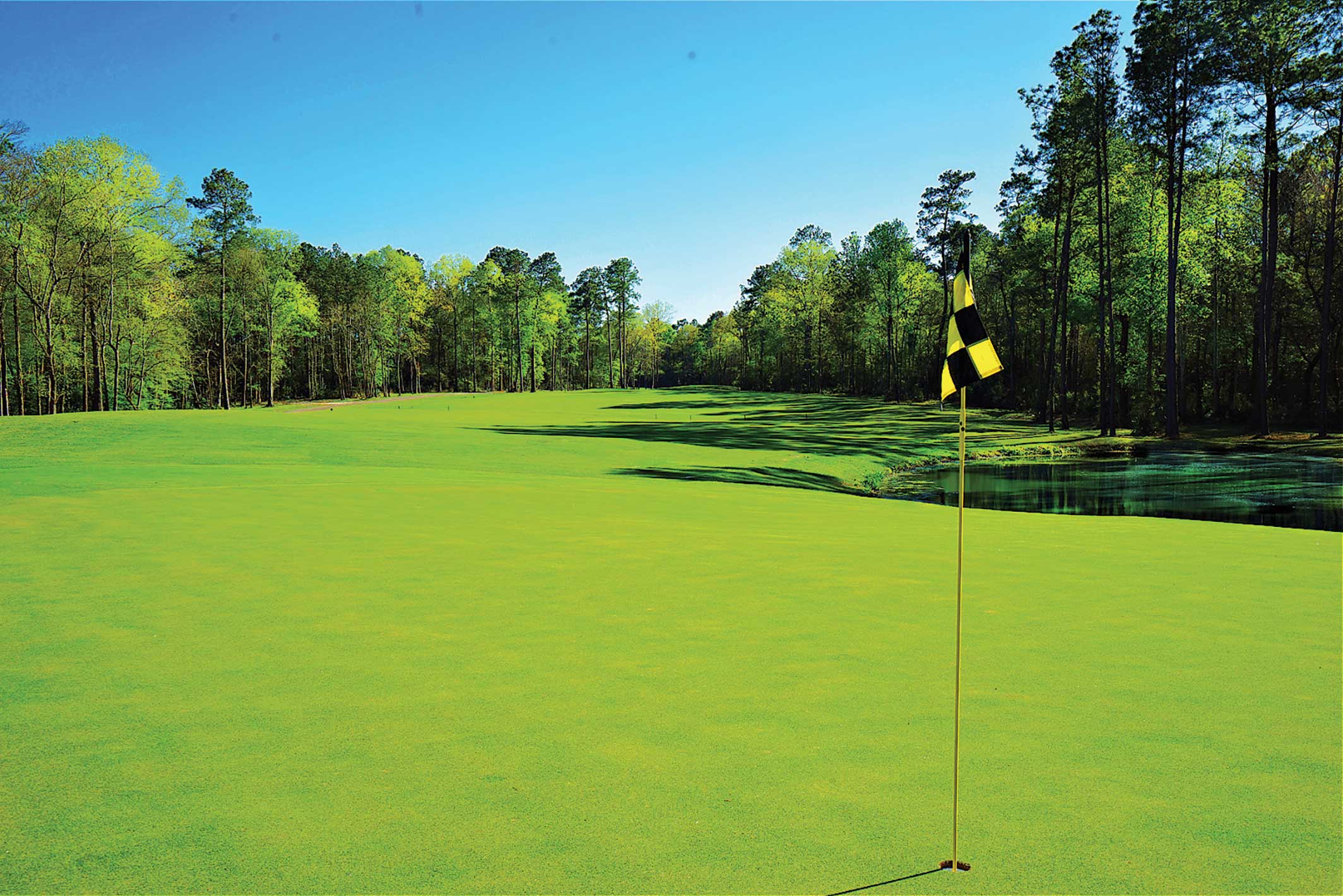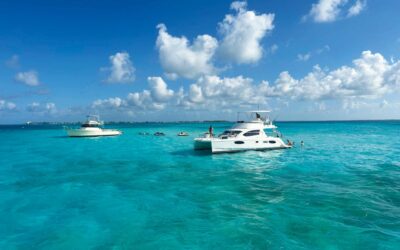By MIKE BAILEY
From the first tee at the new Highland Pines Golf Club north of Houston, you get a new perspective on Houston area public golf. It’s an elevated tee, some 60 feet above the fairway, offering a panoramic view of the generous fairway left of the lake below, as well as the thick groves of pine trees that line most of the holes.
But it doesn’t end there. Get to these perfect fairways, and you can’t help but notice how well the ball sits up. Make it to the green, and there’s another surprise. Perfect, fast greens with plenty of undulation. This is where the fun starts. This is where you need to pay attention.
Highland Pines Golf Club is the latest from Dennis Wilkerson, who along with his partners at the time, pioneered the concept of replica courses when they opened up Tour 18 in Humble in 1992. That course was a collection of copies of the best and most iconic holes in America, most notably Amen Corner from Augusta National and the island green 17th from the TPC Sawgrass Players Stadium Course. Since then Wilkerson’s group has introduced more venues, including Augusta Pines, a former PGA Tour Champions site inspired by the looks of Pinehurst and Augusta.
But Highland Pines is an original. The hilly course (hills like this are not common in the Houston area) was designed by the same architect who created Augusta Pines, Dave Relford. One of the most groundbreaking aspects, however, is the choice of grasses — zoysia tees and fairways and zoysia greens. That’s right the greens are grassed with a new greens grade type called Lazer Zoysia, developed in conjunction with the turfgrass experts at Texas A&M University.
“We spent three years doing this, and I met this grass guy,” said Wilkerson, referring to David Douget, founder of Bladerunner Farms in Poteet, near San Antonio. “I was going to do zoysia fairways like Carlton Woods and Bluejack (National), but he said, ‘You’ve got to see this grass.'”
Highland Pines is currently the only course in the world with this strain of zoysia on its greens, but it most assuredly will not be the last. Other suitors have already visited and are planning to either switch their greens or build new courses with them. And zoysia is already used extensively on greens in Asia, though they are different varieties. Douget said they bred “hundreds and hundreds” of varieties until they found the right one. It has no grain, unlike Bermuda, so it putts as true as bentgrass.
“I was the guinea pig, and I was scared to death, to be honest,” Wilkerson said, “He’s going to sell the (heck) out of this now.”
Aside from the quick green speeds and smoothness of Lazer Zoysia, it’s also saltwater resistant. Unlike paspalum, the salt is absorbed into the leaves, though, not the roots, so you don’t have to flush them out once they are exposed to saltwater. It comes out in the clippings.
Of course, saltwater won’t be an issue in Porter, where Wilkinson had been sitting on 23 acres for years until he decided to build a golf course among the new Highland Pines development, which is just off the Grand Parkway toll road.
As for the course itself, it’s very player friendly. Fairways are overly generous, but once you get to the greens, you have to pay attention. Getting above the hole is an easy recipe for bogey, but there are plenty of birdie opportunities out there.
“Some of the holes designed themselves,” Relford said. “Like the par-4 11th. It was there from the get-go. We just took advantage of these big hills and undulations.”
From the tips — there are five sets of tees — it’s a healthy 7,307 yards. The “Members” tees are just over 6,100 yards, while the “First” first set of tees is just under 5,000 yards. Water comes into play on about half the holes, and there are some nice risk-reward opportunities.
For example, the par-4 seventh is just 304 yards from the Members tees. A large lake looms right, but if you keep it left, the firm fairways definitely provide a path to run it up on the green with a well-placed drive.
The par 5s are also good birdie opportunities. The 530-yard 15th, for example, has a split fairway with a line of trees in the middle. The right side appears to be a bit shorter, but there is a lake right, so it might be a bit riskier. As to the preferred line, Relford admitted that he’s “still trying to figure that out.”
“I always aim in the middle because I figure I’m not going to hit it straight,” Relford, who worked for Arthur Hills for a few years, said with a chuckle.
The par-5 ninth and 18th are also great fun. Tee shots that make it to the downslope on the ninth can run an extra 50 years and set up a very reasonable approach to the green for anyone wanting to go for it in two. There is however a lake that fronts the green for those who try to get there in two. A safer three-shot route can be had by playing to the right of the green.
On the 555-yard finishing hole, the tee shot is a fairly short carry over a lake with another good opportunity to hit the large undulating green in two for long hitters. The approach shot is uphill, which makes it somewhat blind, but most interesting.
Highland Pines also has a nice variety of par 3s, with carries over water on a couple of them. The green on the eighth, which is fronted by bunkers, is particularly challenging, especially when the hole location is front right.
Bottom line is Highland Pines provides the Houston area with a great, new public golf option. Memberships are also available, and Wilkerson says he doesn’t anticipate that the course, much like Augusta Pines, will go fully private anytime soon.
“I want the public to see it,” he said.
By MIKE BAILEY





